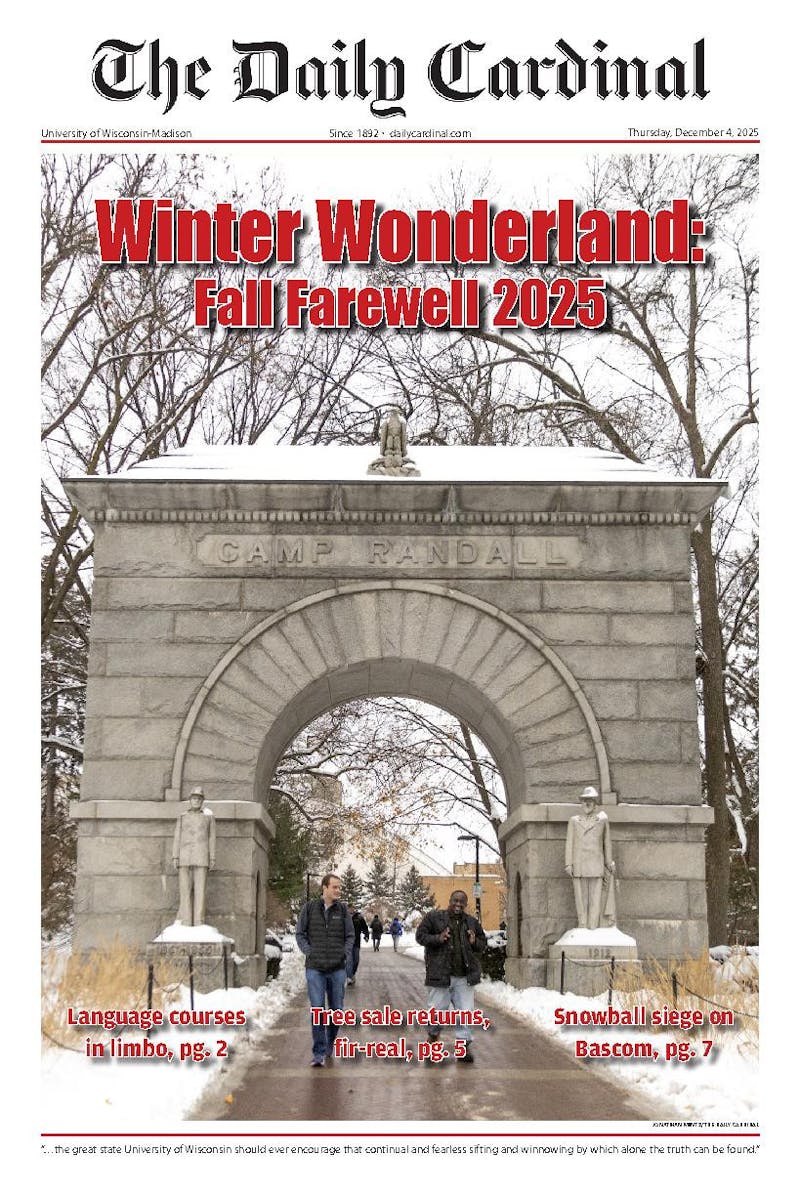University of Wisconsin-Madison nuclear fusion startup Realta Fusion raised $36 million dollars with the hope of building the world’s first commercially viable and operating nuclear fusion device prototype by 2028.
The company hopes to advance research into “compact, scalable modular fusion energy” with the venture capital raised, they announced Tuesday.
A fusion device generates electrical power from a nuclear fusion reaction. Currently, no fusion device reliably creates more energy out than energy in, which would be necessary to make fusion energy commercially viable. Realta Fusion aims to change that.
Realta Fusion was the first company to use high-temperature superconducting (HTS) magnets in a magnetic mirror configuration to contain plasma — a step necessary, but not sufficient, for fusion to occur. The HTS magnets are a “game changer” for device compactness and plasma control and confinement, Kieran Furlong, chief executive officer and co-founder of Realta Fusion, told the Cardinal.
Realta’s open system design comes with commercial benefits, including a more streamlined process to extract the helium byproduct of fusion without requiring downtime, according to Furlong.
Nuclear fusion is achieved by combining hydrogen-based elements, often deuterium and tritium, extracted from seawater. The elements fuse together in plasma, which is essentially a superheated, ionized gas.
When the plasma is tightly contained or pressurized, particles within the plasma fuse, generating heat energy and increasing the energy level of the system.
A nuclear reactor would need to heat plasma to around one hundred million degrees Celsius to create the environment necessary for the fusion of deuterium and tritium.
“For a fusion reaction to occur, you need three things: it needs to be hot enough, and dense enough, for long enough…You've got to be able to stabilize a plasma,” Furlong said.
Realta Fusion demonstrated their nuclear reactor design’s first stabilized plasma last July. Furlong hopes Realta will create the world’s first commercial nuclear fusion system.
What is Realta Fusion?
Realta Fusion started two and a half years ago from a $10 million Department of Energy grant given to UW-Madison for the purpose of developing nuclear fusion technology.
Working with the Wisconsin HTS Axisymmetric Experiment (WHAM) device, Realta Fusion achieved the highest magnetic field ever applied to a plasma — 17 Tesla — in July 2024, successfully containing it at high heat conditions. They eventually plan to commercialize a nuclear energy system that could be installed on-site for “data centers, chemical plants, metal recycling, remote mining and other heavy industry” and provide any power output in the range between 50 and 500 megawatts of power.
WHAM uses a magnetic plasma confinement technique, trapping and containing superheated, dense plasma in fields. While most other companies in the race to create commercially viable fusion energy use magnetic confinement devices called tokamaks or stellarators, WHAM distinguishes itself by using a magnetic mirror configuration.
The magnetic mirror configuration in WHAM’s design uses a cylindrical containment vessel, with magnets on both ends of the cylinder.
Compared to other magnetic confinement designs, the cylindrical magnetic mirror device is less researched, Furlong said. The concept was originally introduced in 1954 but stalled in advancement when nuclear fusion funding was cut in the 1980s.
Benefits to the design include more uniform heat transfer because of the cylinder’s shape, essentially acting as a “plasma pipe” with magnets clamping down on either side to contain the plasma, Furlong said. The design also has the benefit of modularity, the ability to replicate many similar devices once a prototype is built.
The same magnet design, vacuum vessel, and radius measurements could be used for different scales of power. Only pipe length would have to vary. For other magnetic confinement configurations, changing power output necessitates a more thorough device redesign.
“They're ‘design one, build one’ technologies. We're a ‘design one, build many’ technology for a wide variety of different scales,” Furlong said. “That's going to help us get down the cost curve to make sure that fusion is a commercially competitive and economically viable source of energy.”
Why fusion?
Nuclear power is a zero-carbon energy source, like solar and wind energy, meaning carbon is not emitted during its generation. But unlike solar and wind, fusion plants would provide a “base load source of power,” or in other words, a consistent, steady supply of energy, according to Furlong.
“Compared to renewables like wind and solar, the major advantage is fusion will be a firm, always-on energy supply,” Furlong said. “With the plant, we run it and we're generating heat and power as we need it, when we need it, versus with wind and solar, you've got to deal with the intermittency of day and night and whether the wind is blowing or not.”
Fusion is commonly compared to fission, a current grid-connected source of nuclear energy. Nuclear fusion generates energy by combining two hydrogen-based atoms to yield products with lower mass and therefore higher energy than the reactants, whereas fission blasts a heavy atom like uranium apart.
“One of the analogies that I use is trying to spin a basketball on your finger,” Furlong said. “You’ve got to actively control it and try and keep it up there. That's fusion. Fission is essentially pushing the basketball down a hill, and it'll roll and gather speed that's hard to control…You get a pile of your radioactive fuel, and you're trying to slow down and moderate and control the chain reaction. With fusion, the difficulty is just getting the reaction to go at all.”
Another benefit to fusion is the resulting nuclear waste is classified as low-level waste, meaning it is less radioactive, not as long-lasting, and safer to handle than the high-level radioactive fuel waste produced by nuclear fission reactions.
With careful material selection in the design stage of fusion reactors, Furlong said the low-level waste produced is comparable to that of an X-ray laboratory being removed from a hospital. In particular, advancements have been made in a material called silicon carbide that could more safely absorb the neutron released by a fusion reaction.
“We can essentially build a fusion power plant that will consist of low activation materials at the end of life,” Furlong said.
The next steps
Realta Fusion plans to use the $36 million dollars they raised on three main projects: advancing the WHAM device using computational physics, designing a prototype fusion energy system and completing plans for the Realta Forge, a fusion research and development facility. They also plan to begin another series of fundraising in 2026.
Though the WHAM device is owned by UW-Madison, it is operated in part by Realta employees, who run computational physics simulations based on WHAM data. Future simulations and experiments will focus on increasing the temperature, density and containment time of a plasma with WHAM, bringing the conditions closer to what is necessary for fusion.
“We want to validate the models with real world data, and then use the models to help steer the experiment as well in terms of different ways and techniques to stabilize the plasma,” Furlong said. “The real twin, the computer simulation, will be providing information on how to fly the plasma in WHAM. And we’ll be using [the WHAM data] to validate the model.”
Though the WHAM device successfully contained a plasma, it is currently too small to create the conditions necessary for nuclear fusion.
Instead, Realta Fusion plans to design and build another, larger magnetic mirror reactor with commercial-scale plasma — a “scaled-up WHAM” — that could produce more energy than it consumes. The device, called Anvil, would serve as a prototype for the reactors Realta Fusion eventually hopes to commercialize and would be housed within the Realta Forge facility.
Furlong said that he hopes to eventually spark a fusion industry in the Midwest, which he considers a prime location for fusion development because of its technical and manufacturing “know-how” as well as its access to large quantities of water and seismic stability.
“It’s fantastic to have the University of Wisconsin, and the depth of expertise and legacy that it has in fusion research,” Furlong said. “We're hoping to take that, ultimately, to a fusion industry here in Wisconsin and in the Upper Midwest.”
Furlong encouraged students from a wide range of disciplines, including mechanical engineering, computer engineering, computer science, law and community engagement, to consider fusion as a career path.
“It's not just for plasma physicists and nuclear engineers…We need a wide range of people to get this industry up and running,” Furlong said. “We're at the beginning of what will be a massive new industry, and we definitely are looking to the University of Wisconsin-Madison as a pipeline of talent that we want to use to build our company.”






